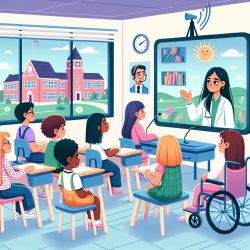The COVID-19 pandemic has dramatically altered the landscape of speech therapy and research, particularly in the field of Electropalatography (EPG). At the 7th EPG Symposium in Japan, experts discussed how they adapted their EPG activities to continue their essential work despite the restrictions. This blog aims to help practitioners improve their skills by implementing the outcomes of this research and encourages further investigation into the innovative methods discussed.
Understanding EPG and Its Applications
Electropalatography (EPG) is a computerized technique that records and displays the patterns and timing of contact between the tongue and the hard palate during speech. It is particularly useful for assessing and treating articulation disorders. Historically, EPG has been used for individuals with cleft palate and other speech sound disorders. The technology has evolved over the years, with systems like LinguaGraph, WinSTARS, and SmartPalate being widely used.
Challenges and Innovations During the Pandemic
The pandemic posed significant challenges to EPG research and therapy, including data collection and ethical concerns. Researchers and clinicians had to quickly adapt to ensure the safety of both practitioners and patients. Key strategies included:
- Remote initial evaluations and consultations using online platforms.
- Innovative methods for EPG plate production and delivery to minimize face-to-face interactions.
- Enhanced disinfection protocols for EPG plates and lab equipment.
- Use of telepractice to deliver EPG therapy, utilizing portable devices like STARS and PTU for remote sessions.
Telepractice: A Game-Changer
One of the most significant adaptations was the shift to telepractice. This approach allowed clinicians to continue providing therapy while adhering to social distancing guidelines. By leveraging technology, therapists could offer visual feedback and real-time guidance to patients remotely. This not only ensured continuity of care but also opened up new possibilities for more frequent and flexible therapy sessions.
Encouraging Further Research
The experiences shared at the symposium highlight the resilience and creativity of the EPG community. Practitioners are encouraged to explore these innovative methods further and contribute to the growing body of research. The pandemic has underscored the importance of adaptability in clinical practice, and continued research will be crucial in refining these approaches for future use.
To read the original research paper, please follow this link: Electropalatography (EPG) activities in Japan and the impact of the COVID-19 pandemic on EPG research and therapy: A report of presentations at the 7th EPG Symposium.










